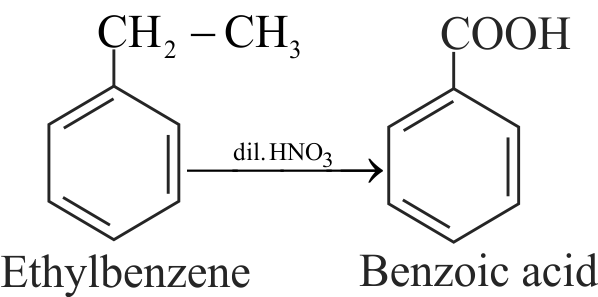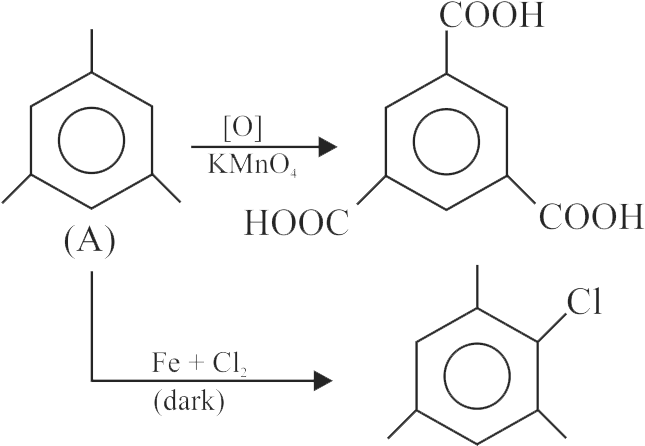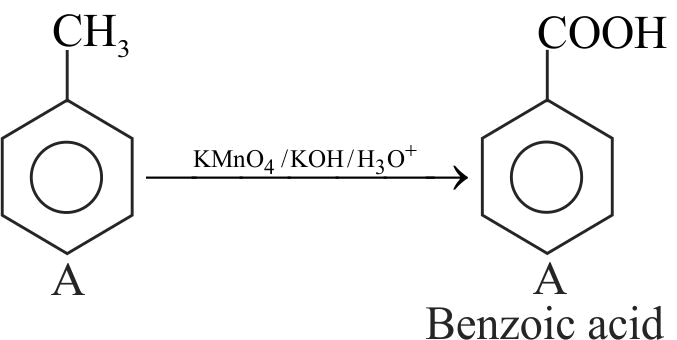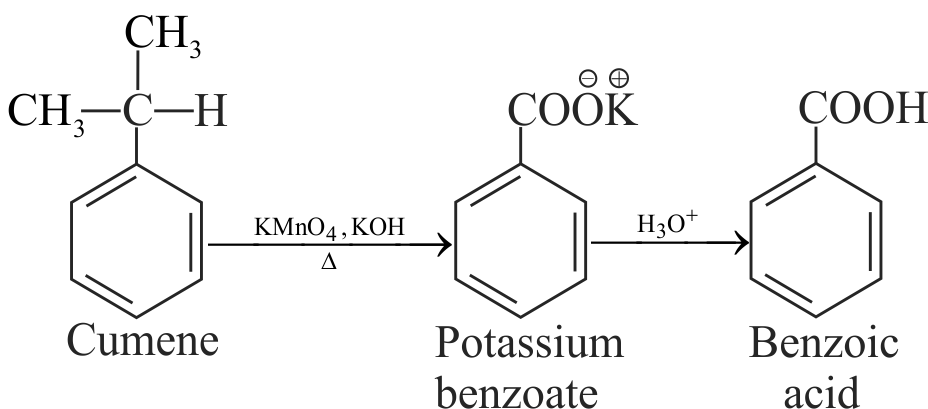323897 An aromatic compound \({\mathrm{\mathrm{C}_{9} \mathrm{H}_{12}}}\) on oxidation with acidic \({\mathrm{\mathrm{KMnO}_{4}}}\) gives tricarboxylic acid ( \({\mathrm{\left.\mathrm{C}_{9} \mathrm{O}_{6} \mathrm{H}_{6}\right)}}\). Compound (A) forms only one isomeric chloro derivative on reaction with \({\mathrm{\mathrm{Fe}+\mathrm{Cl}_{2}}}\) (in dark). The ratio of \({\mathrm{3^{\circ}}}\) carbon atoms present in (A) to the \({\mathrm{3^{\circ}}}\) carbon atoms present in chlorinated product is ____ .
323897 An aromatic compound \({\mathrm{\mathrm{C}_{9} \mathrm{H}_{12}}}\) on oxidation with acidic \({\mathrm{\mathrm{KMnO}_{4}}}\) gives tricarboxylic acid ( \({\mathrm{\left.\mathrm{C}_{9} \mathrm{O}_{6} \mathrm{H}_{6}\right)}}\). Compound (A) forms only one isomeric chloro derivative on reaction with \({\mathrm{\mathrm{Fe}+\mathrm{Cl}_{2}}}\) (in dark). The ratio of \({\mathrm{3^{\circ}}}\) carbon atoms present in (A) to the \({\mathrm{3^{\circ}}}\) carbon atoms present in chlorinated product is ____ .
323897 An aromatic compound \({\mathrm{\mathrm{C}_{9} \mathrm{H}_{12}}}\) on oxidation with acidic \({\mathrm{\mathrm{KMnO}_{4}}}\) gives tricarboxylic acid ( \({\mathrm{\left.\mathrm{C}_{9} \mathrm{O}_{6} \mathrm{H}_{6}\right)}}\). Compound (A) forms only one isomeric chloro derivative on reaction with \({\mathrm{\mathrm{Fe}+\mathrm{Cl}_{2}}}\) (in dark). The ratio of \({\mathrm{3^{\circ}}}\) carbon atoms present in (A) to the \({\mathrm{3^{\circ}}}\) carbon atoms present in chlorinated product is ____ .
323897 An aromatic compound \({\mathrm{\mathrm{C}_{9} \mathrm{H}_{12}}}\) on oxidation with acidic \({\mathrm{\mathrm{KMnO}_{4}}}\) gives tricarboxylic acid ( \({\mathrm{\left.\mathrm{C}_{9} \mathrm{O}_{6} \mathrm{H}_{6}\right)}}\). Compound (A) forms only one isomeric chloro derivative on reaction with \({\mathrm{\mathrm{Fe}+\mathrm{Cl}_{2}}}\) (in dark). The ratio of \({\mathrm{3^{\circ}}}\) carbon atoms present in (A) to the \({\mathrm{3^{\circ}}}\) carbon atoms present in chlorinated product is ____ .




